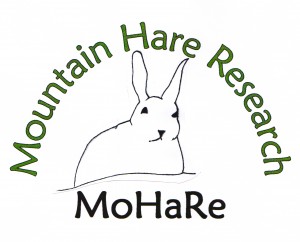Biology and management of alpine vertebrates

The main research field is the study of the status of alpine vertebrate species, particularly mammals and birds, more in dept UAGRA researches define environmental factors that influence vertebrate population dynamics, distributions and behavioural ecology, with the ultimate objective to develop management plans that allow the sustainable use of wildlife as a natural resource. We use radio-tracking to study behavioural ecology and to monitor dynamics and movements. Different census techniques are used to monitor population size and distribution of species. In a next step, a Geographical Information System, containing data on both wildlife distribution patterns and historical time series, is used to supply decisional support instruments. This database allows the development of ready-to-use Habitat Suitability Indices and Habitat Evaluation Procedures, as ultimate tools for wildlife management.
Zoogeography and ecology of bat populations

Bats play essential roles in many ecosystems and are primary predators of economically harmful insects that cause a considerable loss of yield in agriculture and forestry by damaging crops or degrading commercial timber quality. Yet, they are ranked among Europe’s most endangered animals. Several key populations of declining and endangered bat species have lost their traditional roosting sites and foraging habitats. At present, there is, however, still a poor understanding of bat species distribution and habitat preferences. Therefore, the aim of this research is to obtain an updated picture of the status of bats in Northern Italy and to define environmental factors that influence their population dynamics, distribution and behavioural ecology. As a tool for recognizing different species using bioacoustics techniques, a computer-based identification system has been developed.
Alien species ecology and interaction
The introduction of alien species is one of the most important causes of biodiversity loss and represents a long-term threat to ecosystem functioning. Invasive alien species (IAS) can alter the natural evolution of the native ones by competitive exclusion, hybridization, predation and niche displacement which can, ultimately, result in native species extinction. At the Environment Analysis and Management Unit we deal with the threat represented by IAS to biodiversity and society through a combination of applied prevention measures, early detection and prompt response to new invaders. We work in conjuction with regional and state authorities in the control of two invasive squirrels in Italy (Sciurus carolinensis, Callosciurus erythraeus), coypu (Myocastor coypus) and raccoon (Procyon lotor) studying the competitive interaction with the native species and monitoring their populations. Moreover, we have also worked on the surveys to assess presence, distribution and impacts of the vinous-throated parrotbill (Paradoxornis webbianus) in the Varese province.
Threatened species conservation and wildlife management
The relationship between man and homeotherm species conservation, mainly birds and mammals, is one of the main topic we research on.
The return of large carnivores on the Alps, such as the brown bear, the wolf and the lynx, it is raising local population concern on potential impacts on livestock farming, hunting and recreational activities. Therefore, we join in research projects aiming at a proper management of these species, both acquiring field information on distribution, population fitness and movements of individuals and being support to communication programs to local people. We also focus on Alpine Galliforms conservation and hunting management, by medium- to long-term monitoring of population sizes and distribution through field counts and gamebags data analysis, evaluating the impact of human-induced changes of the landscape using remote sensing and GIS.
Invertebrate ecology, ethology and systematics
Invertebrates are the most abundant group of species in terrestrial and aquatic habitats and are functionally important to the functioning of the ecosystems as a whole. Researches on invertebrates ecology and long term monitoring play therefore an important role, not only in the conservation of endangered species and their habitats, but also in the development of environmental evaluation methods and managing plans for the conservation of ecosystems and natural areas.
SPECIAL PROJECTS
ASPER

The Alpine Squirrel Population Ecology Research project started in 1999 as a joint venture between Insubria University and Turin University. The main aim of the project is to build a fascinating long-term data set on the population dynamics and food resources of red squirrels Sciurus vulgaris living in montane and subalpine conifer forests. The ASPER studies have been going on for more than 15 years and are entering a stage whereby the time-series data on population demography and abundance of food resources are suitable to explore habitat selection and local adaptation by red squirrels to the different montane and subalpine conifer forests-types that form the heterogeneous landscape of one of Europe’s biodiversity hotspots, the Alps. Acquiring this knowledge is essential to define red squirrel sanctuaries that must be, at all costs, kept free from expanding grey squirrel populations. Current research is continuing at 6 study sites: 4 in Central Lombardy Alps and 2 in the Western Alps.
MoHaRe

Mountain Hare Research started in 2004 and involved several people and stakeholders. The main objective of the study was to understand mountain hare eco-ecothology, population dynamics and distribution. The project has been carried out in Northern Italy. Mountain hare can be a useful indicator of environmental changes indeed in the alpine environment this species is at the limit of its distribution and global warming could affect not just hare distribution but also its survival. Moreover species on the limits of the distribution range are under strong ecological and genetic pressure. During the reaserch several animals have been captured and monitored with radiotelemetry techniques, data on hunting bag have also been analised to understand population trends. Species distribution have been studied also recording sign of presence and monitoring protocol have been produce.
